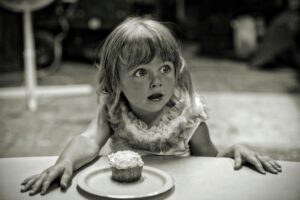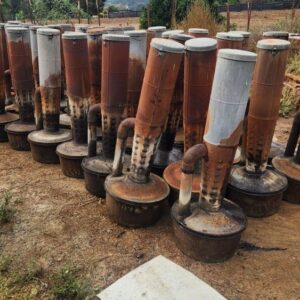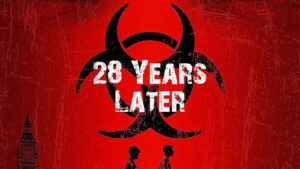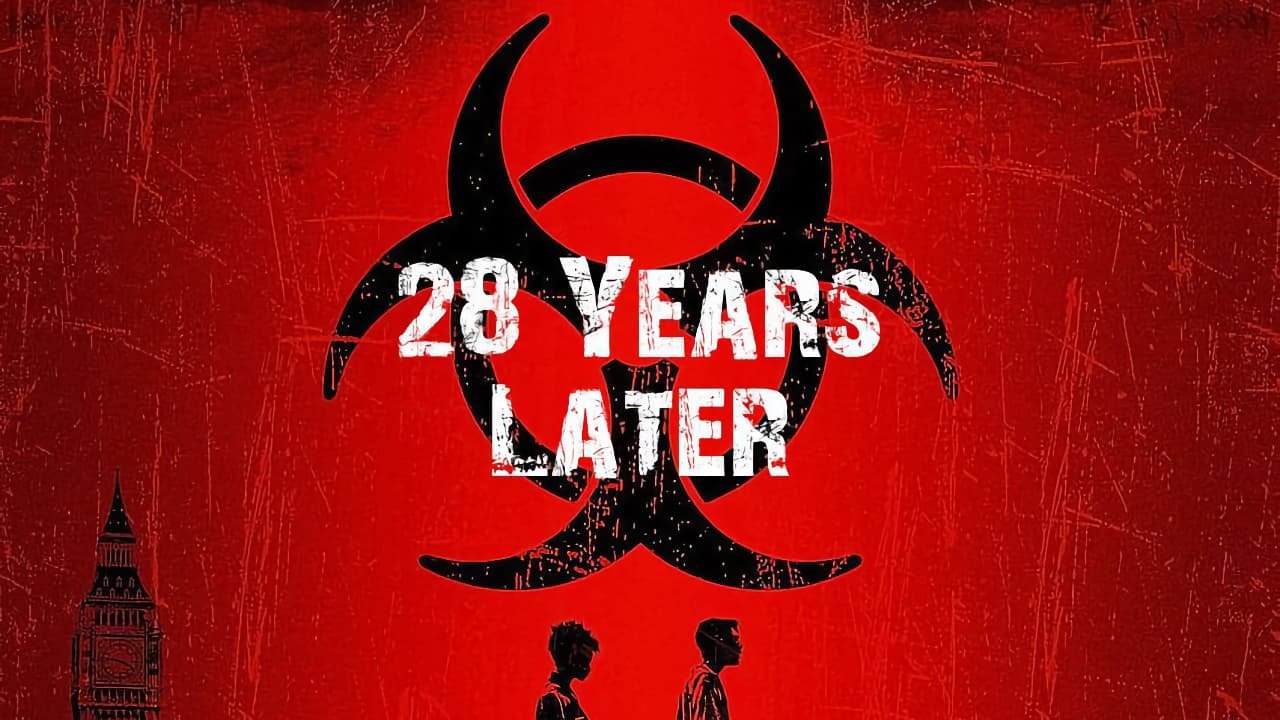A Long-Awaited Sequel Two Decades in the Making
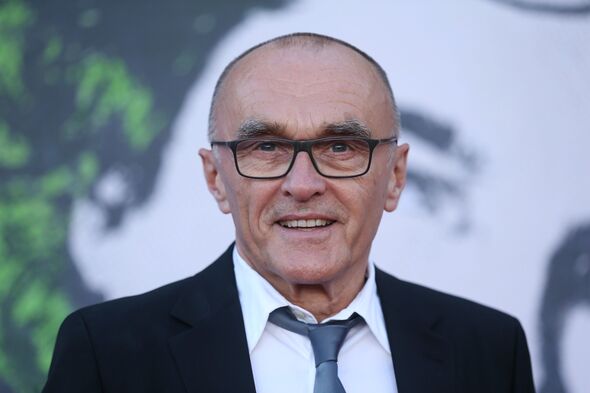
It’s been more than 20 years since director Danny Boyle and writer Alex Garland first introduced us to the terrifying universe of 28 Days Later. With 28 Years Later, they return to that same infected world—older, more cynical, but with no shortage of bold ideas. What could have been a forgettable cash grab ends up being one of the most ambitious horror sequels in years.
Kipling Meets iPhones in a Broken Britain
The film opens in the bleak landscape of Northumberland, England. A foreign soldier stares at his iPhone, its battery down to 1%. “It’ll be a brick in a minute,” he mutters, before tossing it away. It’s a moment that’s both darkly funny and symbolic—technology is useless in a world where rage-infected zombies roam freely.
This bleak humor is heightened by a chilling nod to Rudyard Kipling’s poem “Boots,” which describes the exhausting monotony of war. The film isn’t afraid to be literary, even poetic, while still embracing its genre roots.
A Goofy Movie With a Soul
Despite some absurd moments, 28 Years Later doesn’t lose its edge. In fact, the film leans into its contradictions. It’s dark and philosophical, but also funny and self-aware. At times, it feels like a surreal blend of high art and B-movie chaos—think Trainspotting, but with zombies.
New Tech, Old Fears
In a nod to how far filmmaking has come, the movie was shot using the iPhone 15 Pro Max, strapped into a high-tech 3D rig. The original 28 Days Later was made on low-budget camcorders to simulate found-footage realism. Now, Boyle and cinematographer Anthony Dod Mantle go in the opposite direction—toward ultra-clear visuals that are eerily pristine. The horror feels even more surreal when every frame is razor-sharp.
Visuals That Leave You Breathless
One of the film’s strongest points is its breathtaking cinematography. Huge empty landscapes, silhouettes of infected figures on distant hills, and drone shots of characters sprinting across flooded roads—all of it adds up to what can only be described as cosmic horror. It’s not just about jump scares—it’s about making the viewer feel small in a vast, broken world.
Garland’s Script: Smart, Brutal, and Emotional
Alex Garland, best known for writing Ex Machina and Annihilation, delivers one of his most emotionally rich scripts to date. The movie explores themes of death, decay, and family bonds, all while staying grounded in zombie horror.
Much like the unforgettable scene in 28 Days Later where Brendan Gleeson’s character gets infected and looks at his daughter one last time, this sequel hits similar emotional highs. It’s not just about violence—it’s about what we lose when society collapses.
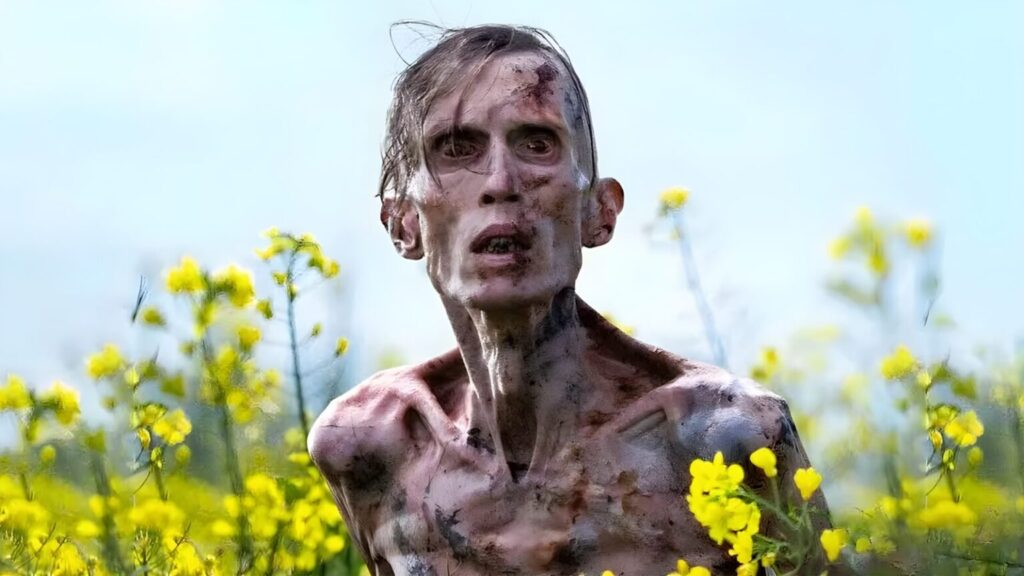
Welcome to Holy Island: A Real-World Metaphor
Most of the story takes place on Lindisfarne, also known as Holy Island—a small landmass connected to mainland England by a causeway that disappears with the tides. It’s a brilliant metaphor for post-Brexit isolationism, portraying a community that clings to tradition and fear.
The islanders are tough, patriotic survivors. They wear metal masks, raise their children to hunt with bows and arrows, and drink beer like it’s the end of the world (which it is). Meat is scarce, but spirits are strong.
A Tense Father-Son Storyline
At the heart of the movie is the story of Jamie (played by Aaron Taylor-Johnson) and his teenage son Alfie (Alfie Williams). In their community, boys are expected to prove themselves through survival expeditions to the mainland. Jamie pushes Alfie to be strong, but Alfie’s main concern is his mother Isla (Jodie Comer), who is seriously ill.
When Alfie decides to return to the mainland—alone—in search of a doctor, the movie takes on a new tone. It becomes a dark coming-of-age quest, where horror blends with fairy tale eeriness.
New Infected, New Nightmares
The rage virus has mutated. There are now two types of infected: the usual slow, mindless ones, and terrifying new alpha zombies, who are stronger, faster, and possibly smarter. These new monsters lead packs of infected, and they make the world feel even more dangerous and unpredictable.
One standout moment takes place on a stationary train filled with the infected—an outrageous, high-stakes set piece that nearly derails the movie in the best possible way.
Acting That Elevates the Horror
Young actor Alfie Williams shines in his role as a confused but determined boy. He’s vulnerable, scared, but ultimately brave. Taylor-Johnson and Comer both bring raw emotion to their roles as weary parents trying to do their best in a hopeless world.
Without spoiling too much, Ralph Fiennes also appears later in the film in a role that’s both tragic and unexpectedly funny. His performance adds a layer of humanity that ties everything together.
A Haunting, Symbolic Climax
One of the most powerful scenes occurs late in the film, where the visuals become almost painterly—much like a video game sequence inspired by Hieronymus Bosch. It’s horrifying, beautiful, and deeply symbolic. The filmmakers go beyond gore and spectacle to touch on something more spiritual: a reminder of mortality that’s poetic rather than preachy.
More to Come: The Bone Temple Awaits
The ending may divide audiences. It sets up a direct sequel—28 Years Later: The Bone Temple—and pulls the rug out from under some of the emotional resolution built up earlier. Some may find it jarring, but others will see it as bold, genre-defying storytelling.
Either way, Boyle and Garland are clearly playing the long game, daring to rewrite the rules as they go.
Final Thoughts
28 Years Later is a rare kind of sequel: one that respects its legacy while evolving in unexpected ways. It’s a zombie movie with brains and heart, combining spectacle with symbolism, and genre thrills with emotional depth.
If you’re a fan of the original films—or love horror that challenges your expectations—don’t miss this one. It may be “extremely goofy,” but it’s also deeply profound.
